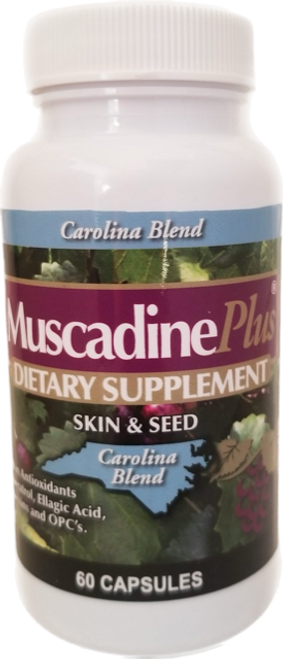Carolina Blend is a proprietary and exclusive blend of Muscadine grape skin and seed without simple sugars. This product contains 100% of the polyphenolics of the entire Muscadine grape.

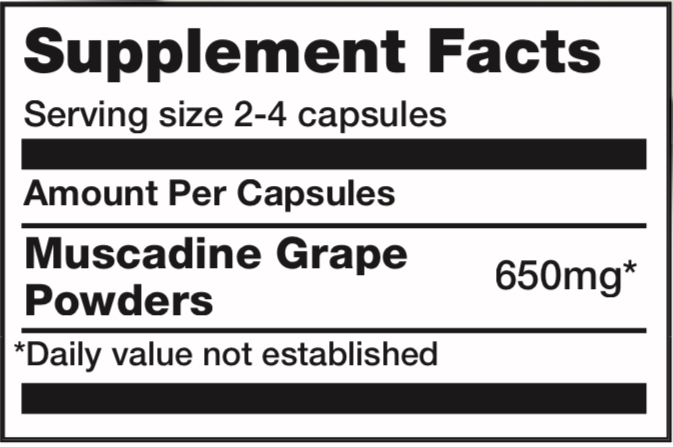
The Health Benefits of the Muscadine Grape
Antioxidants & Anti-inflammatory Agents
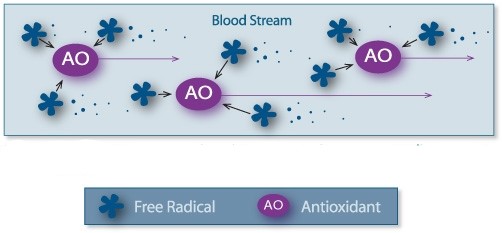
Many of the phytonutrients present in the Muscadine Grape have been recognized as powerful antioxidants and anti-inflammatory agents. Antioxidants are important because they rid the body of free radicals that damage our cells. Free radicals are caused by exposure to radiation, tobacco smoke, pollutants, solvents, and even intense exercise. Damage to DNA can also occur which can cause cell mutations resulting in cancer. There is strong evidence relating free radicals to aging and disease processes, e.g., cancer, atherosclerosis, immune system decline, brain dysfunction, cataracts, birth defects, rheumatoid arthritis, and inflammatory bowel diseases such as Crohn’s disease and ulcerative colitis. How Muscadine Grape phytonutrient antioxidants work is by binding and inactivating free radicals in the blood stream and in tissues.
Free radical production is controlled by several factors including antioxidants consumed as part of the diet. Some foods and supplements have higher antioxidant capacity than others. The Muscadine grape has over twice the antioxidant power as the blueberry based on Oxygen Radical Absorbance Capacity (ORAC) measurement.
Antioxidants can help prevent the initiation, propagation, and termination of free radicals. Muscadine grapes and the antioxidants present in this grape have been studied as powerful antioxidants. Some of the most notable phytonutrients studied as antioxidants and anti-inflammatory agents found in the Muscadine grape include but are not limited to:
- Resveratrol
- Piceatannol
- Ellagic Acid
- Catechin
- Epicatechin
- Quercetin
- Myricetin
- Pterostilbene
- Gallic Acid
- Pectin (a dietary fiber)
- Kaempferol
- Vitamin C
- Caffeic Acid
- Anthocyanidins
- OPCs Oligometric Procyanidins
These phytonutrients are well-known in the scientific and health care professional community for their beneficial effects. Many have been studied as effective antioxidants and anti-inflammatory agents. While a high ORAC value is important, “many scientists think that the disease-fighting benefits of fruits and berries is not just due to their ability to provide antioxidant protection. It is also highly likely that phenolic compounds like resveratrol and quercetin produce specific gene responses reducing inflammation and improving the health of the heart and other organs.”
Nutrition
Muscadines are technically in the berry family and provide the beneficial phytonutrients associated with the purple to red range of fruits. Nutritionally, Muscadine grapes are low in fat and sodium, and have a healthy amount of potassium, fiber, and Vitamin C. The essential nutrients in a 100g (3.5oz.) serving of Muscadine grapes are listed in the table.
Interestingly it has been pointed out that the fiber in Muscadine grapes is more than that in oats. According to the FDA, a food that has at least 0.6 grams of soluble fiber per serving without fortification can make the following claim: “Low fat diets rich in fiber may reduce the risk of some types of cancer and may reduce the risk of heart disease.” One serving of Muscadine grapes clearly qualifies for this claim. This is one key reason Muscadine grape skin-based products are thought to lower cholesterol.
| Nutrient | Bronze-skinned | Dark-skinned |
|---|---|---|
| Calories | 68 | 76 |
| Protein | 0.5g | 0.5g |
| Fat | 0.4g | 0.4g |
| Carbohydrates | 12g | 14g |
| Sodium | 5mg | 7mg |
| Calcium | 17mg | 24mg |
| Potassium | 163mg | 167mg |
| Magnesium | 5mg | 5mg |
| Vitamin C | 7mg | 6mg |
| Dietary Fiber | 3g | 3g |
| Soluble Fiber | 1g | 1g |
The Muscadine Grape is very unique!
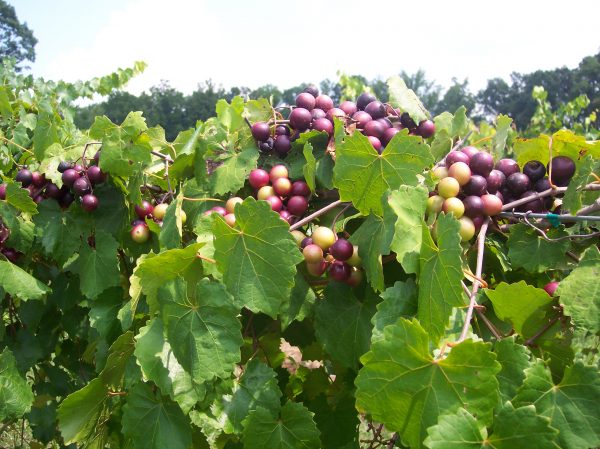
Muscadine grapes are scientifically known as Vitis rotundifolia and are genetically distinct from the French or bunch grape (Vitis vinifera). Muscadine grapes are native to Southeastern United States and can be found growing wild in the back yards of many southern homes.
The Muscadine grape differs from other grapes in several ways.
First, the most notable difference is the thick skin of the grape. This thick skin gives the Muscadine grape a natural resistance to disease, fungi, and insects. The skin is where much of the antioxidant power of the Muscadine grape is stored.
Second, Muscadine grapes have an extra set of chromosomes containing genes that allow them to produce a unique balance of phytonutrients that are virtually absent in other grapes.
Third, the Muscadine grape has significantly more antioxidant power than other grapes. Based on the ORAC standard measurement, Muscadine grapes have been measured as high as 6,800 per 100 grams, compared to 739 for red French grapes. Muscadine grape skins alone have about 6-8 times as much antioxidant capacity as whole blueberries.
The fourth main difference in Muscadine grapes and other grapes is the amount of natural resveratrol and ellagic acid. These phytonutrients have been studied as powerful antioxidants with potent anti-cancer properties.
The Heritage of the Muscadine Grape
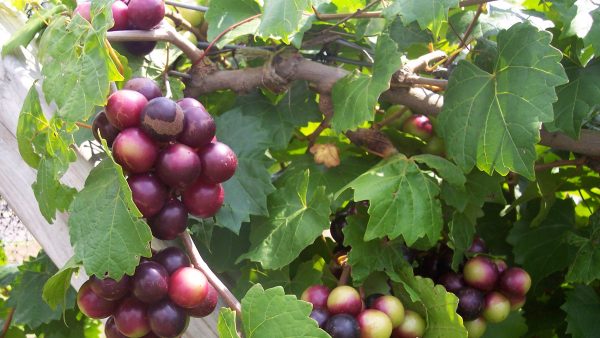
Muscadine grapes are scientifically known as Vitis rotundifolia and are genetically distinct from the French or bunch grape (Vitis vinifera). Muscadine grapes are native to Southeastern United States and can be found growing wild in the back yards of many southern homes.
The Muscadine grape differs from other grapes in several ways.
First, the most notable difference is the thick skin of the grape. This thick skin gives the Muscadine grape a natural resistance to disease, fungi, and insects. The skin is where much of the antioxidant power of the Muscadine grape is stored.
Second, Muscadine grapes have an extra set of chromosomes containing genes that allow them to produce a unique balance of phytonutrients that are virtually absent in other grapes.
Third, the Muscadine grape has significantly more antioxidant power than other grapes. Based on the ORAC standard measurement, Muscadine grapes have been measured as high as 6,800 per 100 grams, compared to 739 for red French grapes. Muscadine grape skins alone have about 6-8 times as much antioxidant capacity as whole blueberries.
The fourth main difference in Muscadine grapes and other grapes is the amount of natural resveratrol and ellagic acid. These phytonutrients have been studied as powerful antioxidants with potent anti-cancer properties.
They must be held in estimation by them, as they carefully remove the shrubbery from around them, wherever they grow, to allow the fruit to ripen better.”
Later, in 1584, Sir Walter Raleigh’s explorers, Captains Philip Amadas and Arthur Barlowe, wrote that the coast of North Carolina was so full of grapes that the very beating and surge of the sea overflowed them. Barlowe wrote,
In all the world, a similar abundance was not to be found.”
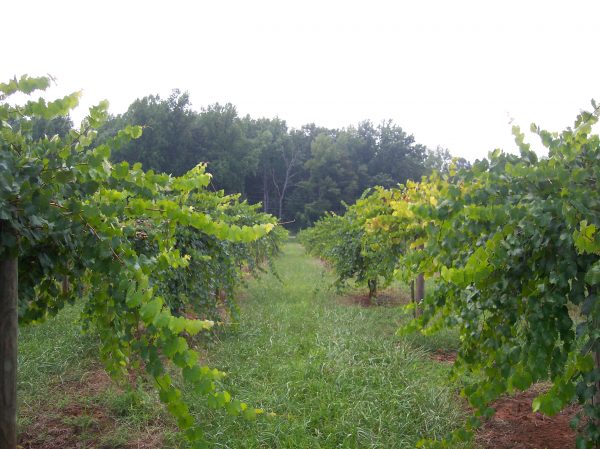
In 1585, Governor Ralph Lane stated in describing North Carolina to Sir Walter Raleigh that,
We have discovered…grapes of such greatness, yet wild, as France, Spain, nor Italy hath no greater…”
Sir Walter Raleigh’s colony is credited with discovering the famed “Mother-vine” on Roanoke Island. This vine, which still exists today, has a trunk 2 feet thick and covers half an acre. The Muscadine grape has and has had many names over the years. The early settlers simply called them the “Big White Grape.” During the 17th and 18th centuries, cuttings were placed around a small town called Scuppernong in Washington County, North Carolina.
The North Carolina Wine and Grape Council reports that,
James Blount of the town of Scuppernong took the census of Washington County in 1810 and reported 1,368 gallons of wine made there. A report in the Star newspaper, by Dr. Calvin Jones, dated January 11, 1811 commented on Blount’s report and was the first written record of the grape being referred to as the Scuppernong Grape. Eight years later in 1819, Nathaniel Macon, a member of Congress, sent samples of Scuppernong wine to Thomas Jefferson.”
It is no wonder that North Carolina has proclaimed the Muscadine grape as its state fruit.
Polyphenols
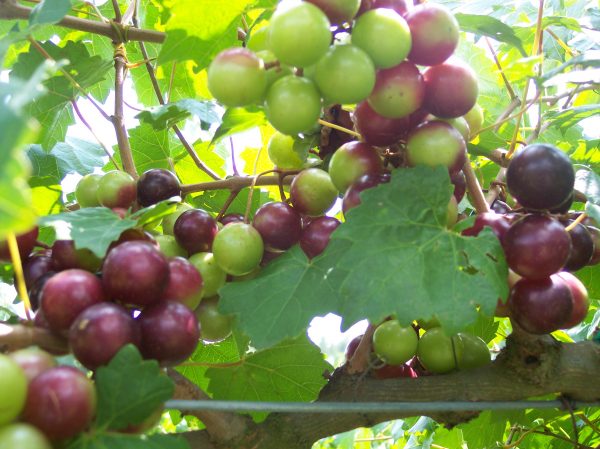
The prominent natural phenolic compounds in the Muscadine Naturals powder are: Ellagic Acid, Myricetin, Quercetin, Kaempferol, Resveratrol, and Piceatannol.
Ellagic acid has an excellent free-radical scavenging activity. It has shown to have activity against a number of different types of cancer cells including lung, esophageal, prostate, refractory prostate cancer, breast cancer and colon cancer.
Myricetin is a polyphenolic antioxidant. It along with Resveratrol, Piceatannol, Quercetin and Kaempferol have been shown to have activity against formation of B-amyloid fibrils and has thereby excited researchers as a potential thwart to Alzheimer’s disease (accumulation of amyloid fibrils in nerve cells of the brain has been thought to be a significant part of Alzheimer’s.
Myricetin (along with Quercetin, Kaempferol, and Resveratrol) implicated as the key compounds responsible for the effectiveness of grape powder in exerting a cardio-protective effect in pre and post menopausal women, by lowering plasma lipids, and reducing oxidative stress. Myricetin has also (along with Quercetin, Kaempferol, Resveratrol, and Piceatannol) recently been shown to enhance bone formation experimentally. This may have implications in preventing osteoporosis. Resveratrol has been shown to reverse the osteoporosis-induced by cigarette smoking, as well as doxin toxicity, and inhibit myleoma cell growth while preventing osteoclast (bone resorbing cells) activity and promoting osteoblast (bone forming cells) activity. The active form of Resveratrol, Piceatannol stimulates osteoblast differentiation mediated by bone morphogenic protein-2 (BMP-2) production. Myricetin has also been shown to stimulate BMP-2, osteoblast formation and holds promise for the ability to increase bone mass.
The use of these grape polyphenols (along with Quercetin, Kaempferol, Resveratrol, and Piceatannol, which are prominent in grape skins) have been shown to have particular potential benefits in addressing climacteric (menopause) syndrome as well as in prostate health, as well as their anti-carcinogenic, neuro-protective, cardio-protective, and bone forming properties.
Kaempferol has generated a great deal of excitement as a plant-derived polyphenol that not only protects LDL from oxidation, but also prevents atherogenesis (initiation and buildup of plaque in the arteries – the basic process which causes heart attacks and strokes). Another exciting publication showed that Kaempferol induces apoptosis (cell death) in glioblastoma (a malignant brain tumor). Kaempferol, like its counterpart grape polyphenols, has previously been shown to suppress growth of a number of human malignancies.
Quercetin has been shown to lower blood pressure in patients with high blood pressure, to protect against mercurial toxicity, as well as having some alleviating effect for chronic prostatitis/ chronic pelvic pain syndrome. Together with Resveratrol, Quercetin has been shown to reduce apoptotic neuronal cell death by its anti-inflammatory properties (which may be relevant to Parkinson’s Disease). Quercetin has also been shown to be cardioprotective. It has been shown to protect heart cells from the toxicity of drugs used for treating cancer with notable cardiac toxicity.
Recent work at the National Cancer Institute shows an inhibition of prostate cancer cell growth by Muscadine grape skin extract. Skin inhibition was found to be independent of the prostate cancer cell inhibition by Resveratrol. The muscadine grape skin powder of Muscadine Naturals contains both of these prostate cancer fighting components! The authors of this finding have recommended that it is an important source for further development of a chemo-preventative or a therapeutic agent against prostate cancer.




